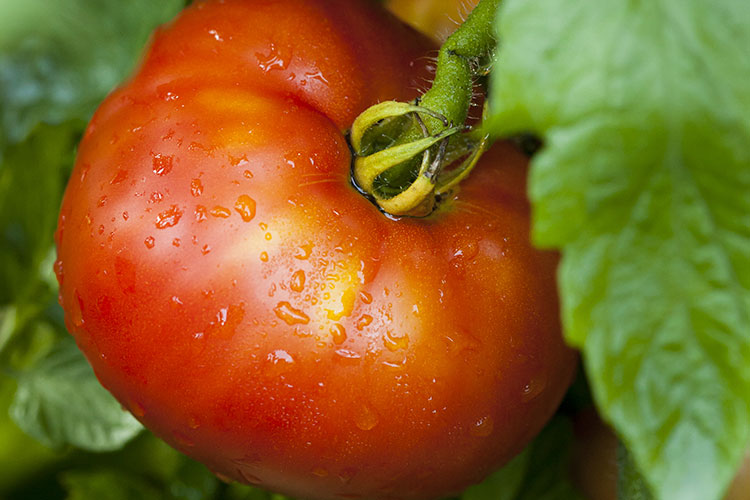GardenZeus Tips for Fertilizing Tomatoes During the Growing Season

Tomatoes are heavy feeders, and perform best in rich, living soil with sufficient organic matter and calcium.
GardenZeus recommends providing additional nitrogen and nutrients to tomatoes after transplanting and again once tomatoes begin to produce fruit. Add nitrogen in the form of diluted urea or a cup of chicken manure diluted in 4 gallons of water (half cup if fresh manure) and mixed thoroughly, applied as a soil drench. Adding too much nitrogen may result in rapid growth and lush, high-carbohydrate leaves that attract insect infestation; and slowed or reduced yields.

Early in the growing season, crush or grind up eggshells, scatter at the base of each plant, and cover with fine mulch, to provide extra calcium to each tomato plant. Bury plugs of finished compost or worm compost a few inches outside of the driplines of established tomato plants 2 or 3 times per growing season and water thoroughly.
Avoid providing excess nitrogen, such as when planting tomatoes near lawns that are fertilized with nitrogen, as this will encourage plants to grow vegetation and produce leaves and stems but not fruit. Too much nitrogen may also result in plants that have excessive foliage, that become extra prone to pests and disease.
Apply fish emulsion or seaweed as drenches or foliar sprays to soils that are infertile, alkaline, or lacking micronutrients as plants become established.
For complete instructions on growing tomatoes in your area go to GardenZeus and enter your zip code, then go to tomato. Other articles on tomato in which you may be interested:
Why Are Leaves on My Tomato Plants Turning Yellow?: Part 1 of 2